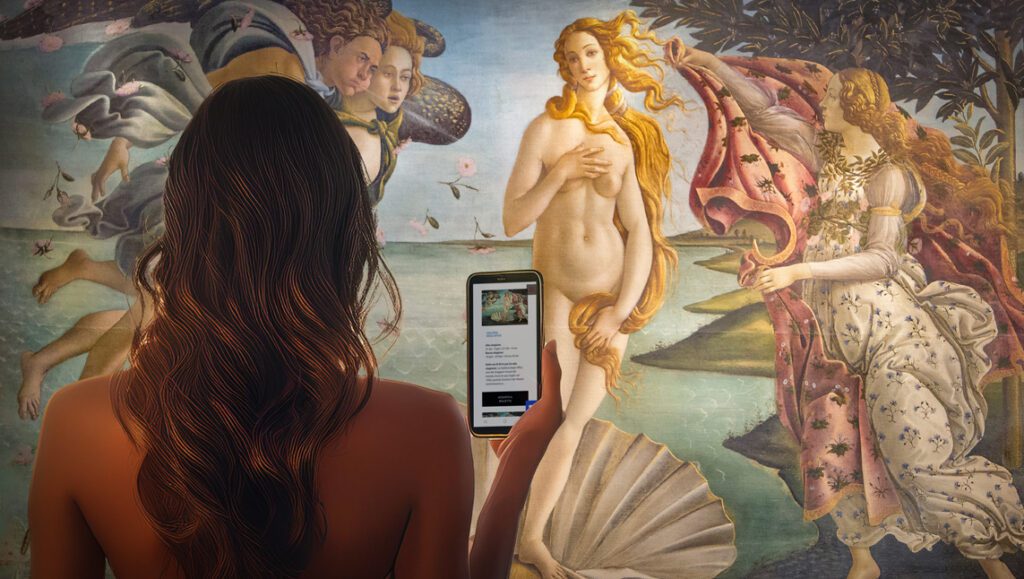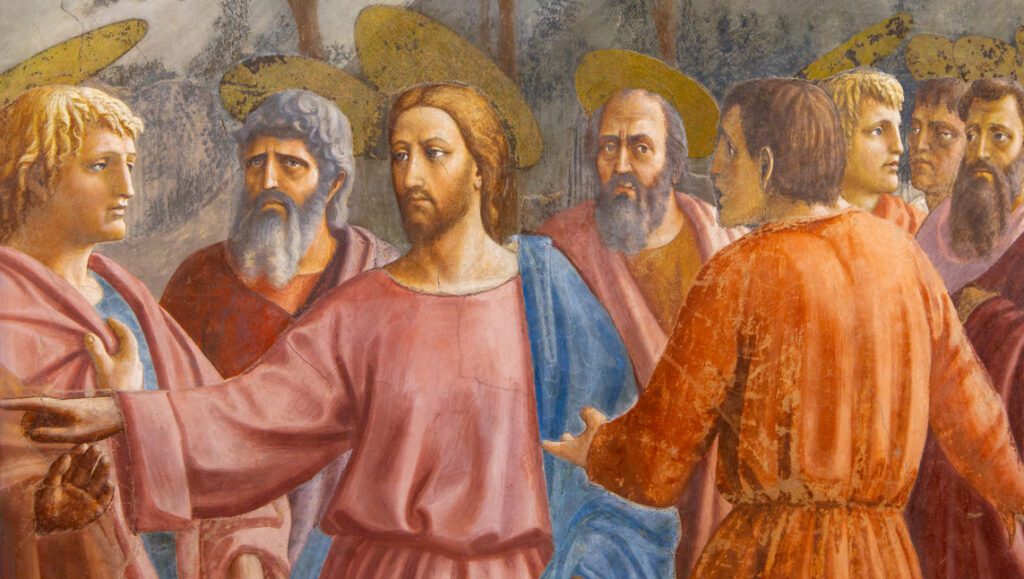
The Carmine altarpiece, among the most fascinating of the Pinacoteca
Trying to hold back my easy enthusiasm in the face of the discoveries that I happen to make of the art treasures of Tuscany, as I find myself reading and studying – discoveries that I do not hesitate to share both on social networks and above all through the pages of this blog –, the work I am presenting here to readers is the Carmine Altarpiece by Pietro Lorenzetti, undoubtedly one of the most fascinating works in the Pinacoteca di Siena.
The desire to present another painting from the Sienese museum comes from the need to do justice to a work that does not receive the deserved attention from the visitors, confined as it is in a corner space of the room, moreover dazzled by the light from one of the windows of Palazzo Bonsignori, therefore a bad lighting making it pass for yet another painting with a gold background in the Pinacoteca.
Returning to the genesis of this polyptych not only means re-appropriating a great masterpiece, but also re-reading the lively historical dynamics experienced by religious orders at the time this work was created. This large altarpiece was painted starting in 1326 by Pietro Lorenzetti. The date of completion can be seen from the artist’s signature on the painting which, on the basis of the already established tradition starting from the Maestà by Guido da Siena for San Domenico church in Siena and then appearing on the more famous Maestà by Duccio for the Sienese cathedral, he leaves on the step of the Virgin throne:
PETRUS LAURENTI DE SENIS ME PINXIT A.D. MCCCXXVIII(I).
The work, coming from the church of San Niccolò al Carmine in Siena, looks like a polyptych where in the central table we see the Virgin enthroned with child, flanked by San Nicola, dedicatee of the church of San Niccolò, and the Prophet Elijah, mythical founder of the Order of Carmelites, the friars who took care of the aforementioned church and the convent in Pian dei Mantellini.
A manifesto for the Carmelite Order
For this mendicant Order – which spread in Europe later than the primitive Franciscans and Dominicans – Lorenzetti’s polyptych represented a veritable propaganda manifesto, since, in addition to the central panels with the saints, it is in the predella that the story of the legendary foundation of the Carmelites unfolds.
The historically ascertained origins of the Order can be traced back to ancient Acre, a city represented on the left side of the central panel of the polyptych predella; in the centre of this panel we see the delivery of the rule by Albert, Patriarch of Jerusalem, to San Brocardo, first prior of the Carmelites.
The arrival in the West of the Order dates back to the period after 1261, the year that marks the end of the Latin Empire of the Crusaders.

Central predella panel, Carmine Altarpiece, Pietro Lorenzetti, 1326-29, Pinacoteca di Siena
The Order coming from the Holy Land
If the central panel of the predella becomes, as lucidly observed by Chiara Frugoni, a bridge between the past and the then present of the Order – which, leaving the Holy Land, went on to establish itself in the West –, here it becomes a highly suggestive occasion to make mention some of the details that in Pietro Lorenzetti’s Carmine Altarpiece deserve to be observed.
Let us always remain on the panels of the predella: the representation of Acre is rendered by Pietro with extraordinary attention to the architecture, according to a taste already established Duccio di Buoninsegna’s time when, in 1311, he had repeatedly inserted ‘snippets’ of contemporary Siena into the panels of the stories of Christ in the Maestà for the Cathedral.

The fountain of the prophet Elijah, Carmine Altarpiece , P. Lorenzetti, 1326-29, Pinacoteca di Siena
This attention to the city rendition is perhaps one of the most characteristic elements of Sienese painting, especially among the Lorenzetti brothers (just think of the Buon Governo landscape, without forgetting the refined glimpses Pietro paints in the lower Basilica of Assisi), an attention we also find so in the painters of the following generations.
The church that can be seen on the right, again in this central panel of the predella, seems to refer, with its prothyrum structure, to the main portal of the Arnolfo’s Cathedral of Santa Maria del Fiore façade in Florence, as well as to those Giotto architectural “openings” of the chapels that the Florentine master frescoed in Santa Croce.
From the representative style of the predella panels therefore emerge the points of contact of Pietro Lorenzetti with Florentine painting, notably precisely with Giotto’s innovations which in the Sienese polyptych are translated into a ‘plastic’ spatial rendering of the buildings and natural elements, as well as a monumental execution of the figures of the panels of the central band, from the majestic Virgin to the imposing figure of the prophet Elijah, almost as if the statuesque dimension of the latter were a reflection of his moral stature.
In addition to this we see a meticulous rendering of the details reflecting a wholly Sienese sensitivity of the painter (see the transparency of the glasses on the fountain of the prophet Elijah, in the second left panel of the predella).
The first Thebaid
Returning again for a moment to the central predella panel, the landscape cues with also the presence of characters referring to the first examples of friars’ anchoritic life, has always led Chiara Frugoni observing how this featuring can be ranked one of the first examples of Thebaid, a subject that will have great success in Florence from the end of the fourteenth century. If the long central scene of the predella acts, as has been said, as a link between the past and the present of the Carmelite Order, it is then at the two ends of the lower band that there are equally interesting images:

Sobach’s Dream, Carmine Altarpiece, P. Lorenzetti, 1326-29, Pinacoteca di Siena
the left panel represents the Dream of Sobach, legendary father of the prophet Elijah, while on the right side we find the Delivery of the new Carmelite habit by Honorius IV to the friars, as well as the Approval of the new rule. The latter also presents the curious detail of three winged pontiffs who also deliver papers, referring to the rules preceding the last one, delivered by John XXII as seen in the scene.
Sobach, the legendary father of Elijah
Pausing on the first panel on the left, still on the predella, one wonders what role the mythical father of the prophet Elijah might have had with the Carmelite Order, as well as the prophet Elijah himself, who lived centuries before Christ and therefore of the birth of the religious orders.
Returning to the central table, we see that it is precisely the monumental figure of the Old Testament character that is represented to the left of the Virgin and Child.
Virtually reconstructing the original composition of the polyptych – today unfortunately missing some panels, preserved in other museums – Elijah is not the only great figure of a prophet present, since together with him we find Elisha, another figure wearing the Carmelite habit and holding the scroll with Latin inscription.
This series of references confirms how Carmine Altarpiece by Pietro Lorenzetti is absolutely a work worthy of attention when visiting the Pinacoteca Nazionale di Siena. To discover the meaning of these images, some of which are quite enthralling such as those of the prophets Elijah and Elisha dressed in the Carmelite habit, book a guided tour of the Sienese museum ⟢
Bibliography
C.Frugoni (a cura di), Pietro e Ambrogio Lorenzetti, pp.63- 75, Editrice le Lettere, Firenze, 2010 (Italian edition)



